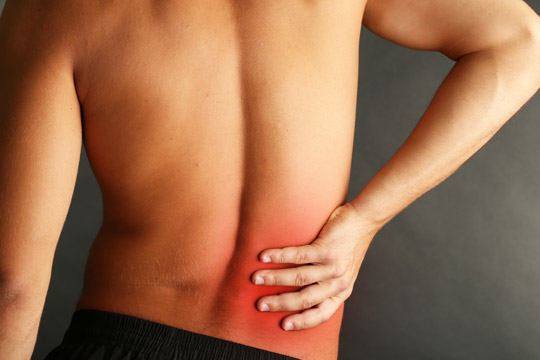Pain
Because acupuncture stimulates the peripheral nervous system, it has the ability to affect every major system of the body, including the cardiac, gastrointestinal, circulatory, cerebral, genitourinary, endocrine, and immune systems. So, while acupuncture can and does treat a wide range of conditions, it is probably best known in the United States for treating various pain syndromes.
There are multiple mechanisms of action involved in treating pain, some of which are quite complex. The actions may be better understood by first knowing that acupuncture points are located at or near neurovascular bundles, also called neurovascular nodes. These precise locations on the body contain high concentrations of sensory nerve fibers, fine blood vessels, fine lymphatic vessels, and mast cells (immune cells within the dermis layer of the skin). These nodes are distributed along the longitudinal pathways of the body where the collateral blood vessels supply the capillaries and fine vessels. It’s interesting to note that Chinese physicians performed detailed human dissections and discovered the phenomenon of continuous blood circulation 2,000 years before it was discovered in the West.
Research has also shown that acupuncture points tend to correspond to areas where connective tissues are thickest. Connective tissue forms a web that runs continuously through the body. This tissue contains many nerve endings.
Depending on the type of pain, as well as on the unique characteristics of the patient, needling sites are chosen. Once the needles have been strategically inserted, a cascade of neurophysiologic mechanisms is set into motion:
- Nerve signaling to brain (via the hypothalamic-pituitary system) prompts the release of endogenous endorphins, enkephalins, monoamines, and cortisol, all of which act to relieve pain. Some of these neurochemicals are 10-200 times more potent than morphine! Acupuncture appears to have the ability to permanently alter the way cells function – for example, increasing the ability of nerve cells to release neurochemicals involved in pain control.
- Neuroimaging studies show that acupuncture appears to calm areas of the brain that register pain and activate those involved in rest and recuperation.
- Acupuncture affects the brain’s long-term ability to regulate pain. Nerve signaling to the brain increases the number of receptor sites for pain-reducing neurochemicals. In addition, there is an increase in the binding availability of mu-opioid receptors (MOR) in regions of the brain that process and dampen pain signals – specifically the cingulate, insula, caudate, thalamus, and amygdala. Opioid painkillers such as morphine and codeine are believed to work by binding to these opioid receptors in the brain and spinal cord. Research from the University of Michigan Chronic Pain and Fatigue Research Center has shown that acupuncture enhances the power of pain medications in this way, potentially allowing one to gain better pain control with lower doses of medication and thereby experiencing fewer side effects. This neurophysiological response to acupuncture also allows the body’s own pain-relieving neurochemicals (endorphins, for example) to be more effective.
- Doppler ultrasound shows that acupuncture increases blood flow in the treated areas. Everything the body needs to heal is in the blood – oxygen from the air we breathe, nutrients from the food we eat, immune substances, hormones, analgesics, and anti-inflammatories. Tissue repair, infection control, and inflammation are addressed by improving microcirculation in this way.
- Thermal imaging shows that acupuncture can reduce inflammation. Inserting a needle into the skin creates a micro-trauma which stimulates the immune cells that control inflammation. Once punctured, these mast cells release leukotrienes and other anti-inflammatory substances (adenosine, for example). Local capillaries respond by vasodilating and becoming more permeable. White blood cells called macrophages leak out from the capillaries and immediately begin to heal the damaged tissue. Not only is there a local anti-inflammatory response caused by the needle, but a systemic immune response is also initiated which can promote healing of damaged soft tissue throughout the body. The anti-inflammatory effect of acupuncture can last from 2-3 days up to a week after the needle is withdrawn.
- Peripheral nerve stimulation interrupts pain signaling in the central nervous system (gate-control theory). As a result, there is the potential to establish neurological homeostasis which reduces both the intensity and perception of chronic pain. For patients with chronic pain, this often requires repeated prompting (multiple treatments) in order to re-educate the neurological centers of the brain involved in pain perception.
- Shortened muscles are relaxed with needling, which results in less pressure on joints and nerves and allows for better blood flow to the affected area.
In summary, acupuncture stimulates the body’s own healing mechanisms. In the case of pain, acupuncture can provide partial or complete symptom relief; it can prompt the reduction of both local and systemic inflammation; and it can help to re-establish neurological homeostasis in which the peripheral and central nervous systems are operating in a non-pain state. In addition, acupuncture does not have the undesirable side effects of nausea, constipation, fatigue, or toxicity associated with pharmaceutical pain medications.
Recommended Resources:
http://www.drweil.com/drw/u/QAA401194/Acupuncture-for-Chronic-Pain.html
http://www.foxnews.com/health/2012/05/15/more-americans-using-acupuncture-for-common-ailments/
http://health.usnews.com/health-news/news/articles/2012/09/10/more-evidence-acupuncture-can-ease-chronic-pain
http://healthland.time.com/2012/09/11/acupuncture-may-help-reduce-chronic-pain-after-all/
http://www.womenshealthmag.com/health/acupuncture-to-relieve-pain?fullpage=1
